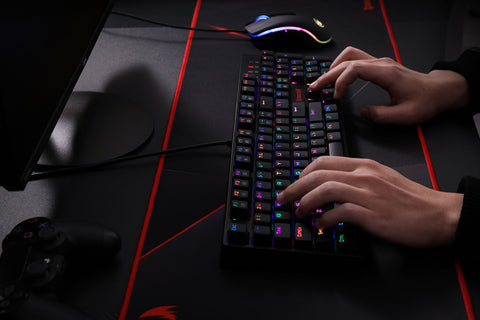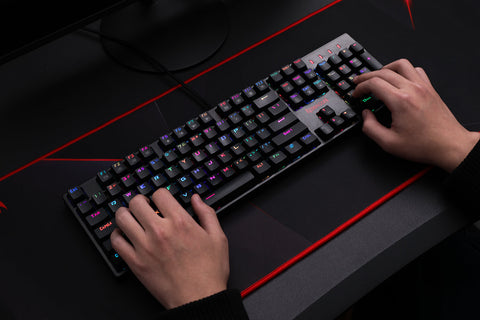When you look at your keyboard, you may have noticed that some keys are abbreviated. This can be confusing for some users, especially those who are not familiar with these abbreviations. In this article, we will provide a brief explanation of each key abbreviation and its function.

Insert (Ins):
The Insert key on your keyboard enables you to overwrite or insert text to the right of the cursor. This function is useful when you need to make changes to your text without having to delete the existing text.
Delete (Del):
The Delete key on your keyboard will delete text to the right of the cursor. It is handy when you want to quickly remove a character or a word from your text.
Home (Hm):
The Home key on your keyboard will move the cursor to the beginning of the current line of text. It is useful when you want to move your cursor to the beginning of the sentence or paragraph.
End (End):
The End key on your keyboard will move the cursor to the end of the current line of text. It is useful when you want to move your cursor to the end of a sentence or paragraph.
Page Up (PU):
The Page Up key on your keyboard will scroll your current window up one page. It is a convenient way to move up your document or web page without using your mouse or trackpad.
Page Down (PD):
The Page Down key on your keyboard will move your current window down one page. It is a handy way to move down your document or web page without using your mouse or trackpad.
Print Screen (PS):
The Print Screen key on your keyboard will take a snapshot of your screen and copy it to the clipboard. You can then paste the screen shot into another program for viewing or editing. This function is useful when you need to capture a portion of your screen and save it as an image.
Scroll Lock (SL):
The Scroll Lock key on your keyboard was used to change the scrolling behavior for certain programs. However, not many programs utilize this feature, and it has become an obsolete function.
Pause/Break (PB):
The Pause/Break key on your keyboard can be used to pause certain programs. This function is useful when you need to pause a program or a command.
Number Lock (NL):
The Number Lock key on your keyboard will switch the number pad to be used as a directional pad. The numbers 8, 2, 4, and 5 can be used as Up, Down, Left, and Right, respectively. This function is useful when you need to navigate through your document or web page quickly.
Ctrl (Control):
The Control key on your keyboard is abbreviated as Ctrl. It is one of the most important keys on your keyboard and is used in combination with other keys to perform various functions, such as copying and pasting text, opening a new tab in your web browser, or saving a document.
Alt (Alternate):
The Alt key on your keyboard is abbreviated as Alt. It is another important key on your keyboard and is used in combination with other keys to perform various functions, such as opening a drop-down menu, switching between open windows or programs, or accessing special characters.
Shift:
The Shift key on your keyboard is not abbreviated, but it is a key that is commonly used. It is used to type capital letters or to access the upper symbols on the keyboard.
Tab:
The Tab key on your keyboard is also not abbreviated, but it is an important key for navigating through forms, documents, and web pages. It allows you to move from one field or box to the next.
Esc (Escape):
The Escape key on your keyboard is abbreviated as Esc. It is used to cancel a command or operation that is in progress, or to exit a full-screen mode in a program or web page.
F1-F12:
The function keys F1-F12 on your keyboard are abbreviated as F1, F2, F3, etc. They are located at the top of your keyboard and are used to perform various functions depending on the program or application you are using. For example, F1 is commonly used to access help menus, while F5 is used to refresh a web page.
Backspace:
The Backspace key on your keyboard is not abbreviated, but it is an essential key for correcting mistakes in your text. It allows you to delete characters to the left of the cursor.
Enter:
The Enter key on your keyboard is also not abbreviated, but it is an essential key for executing commands or functions, such as submitting a form, sending an email, or starting a new paragraph.
These are just a few more examples of common keyboard abbreviations. By familiarizing yourself with these shortcuts and others, you can save time and be more efficient when using your computer.

Ctrl+Z (Control+Z):
This keyboard shortcut is often abbreviated as Ctrl+Z. It is used to undo the last action that you performed, such as deleting text or formatting a document.
Ctrl+Y (Control+Y):
This keyboard shortcut is often abbreviated as Ctrl+Y. It is used to redo the last action that you performed, such as undoing a delete or formatting operation.
Ctrl+S (Control+S):
This keyboard shortcut is often abbreviated as Ctrl+S. It is used to save a document or file that you are currently working on.
Ctrl+F (Control+F):
This keyboard shortcut is often abbreviated as Ctrl+F. It is used to open the "Find" dialog box, where you can search for a specific word or phrase within a document or webpage.
Ctrl+X (Control+X):
This keyboard shortcut is often abbreviated as Ctrl+X. It is used to cut a selected item, such as a piece of text or a file, and save it to the clipboard for later use.
Ctrl+A (Control+A):
This keyboard shortcut is often abbreviated as Ctrl+A. It is used to select all items or text within the current document or window.
Ctrl+P (Control+P):
This keyboard shortcut is often abbreviated as Ctrl+P. It is used to open the print dialog box, where you can select a printer and configure print settings.
In conclusion, understanding the keyboard abbreviations is essential for every computer user. By knowing the function of each key abbreviation, you can work more efficiently and navigate through your computer faster. Now that you know what these keys mean, you can make use of them to improve your productivity.



























